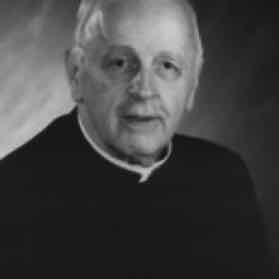The press is concealing the
evidence of Vincent Foster's murder
The Government Printing Office catalog of documents shows Ken Starr's Report on the Death of Vincent W. Foster is 137 pages.
The press falsely reported Ken Starr's Report was only 114 pages and journalists continue to conceal the evidence of Vincent Foster's murder.
New York TImes, October 11, 1997
L.A. TImes, October 11, 1997
St. Paul Pioneer Press, October 11, 1997
The following excerpts are from Failure of the Public Trust.
Patrick was harassed beginning October 26, 1995, and the harassment obviously involved the FBI. Five months later, we completed Patrick's Report of Witness Tampering, detailing and proving the harassment, and gave it to almost all the major newspapers. No articles appeared.
On October 24, 1996, just under a year after the harassment (before the one-year statute of limitations for the assault count expired), Patrick filed his civil rights lawsuit. Because the timing was on the eve of the Presidential election, the suit was filed under seal in anticipation of attacks that the suit was politically motivated. On November 12, 1996, one week after the election, it was unsealed and distributed at a press conference held on the steps of the federal courthouse in Washington. Many representatives of the press attended. There was almost no coverage.
A year later, October 10, 1997, Patrick's 20-page submission was attached as an Appendix to Mr. Starr's Report on Mr. Foster's death, by order of the Special Division for the Purpose of Appointing Independent Counsels of the United States Court of Appeals. The media received the Report and its Appendix, much of which is reprinted above. Despite the obvious historical significance of evidence of the FBI cover-up in the case being ordered attached to the Independent Counsel's
Report, the media suppressed its existence. Some of the articles even mentioned Patrick's name, but not his Court-ordered Appendix. On the evening of October 10, 1997, Peter Jennings announced that Starr's report should "satisfy even the most ardent conspiracy theorists." (Only three out of ten Americans believed him.)
In October of 1998, Patrick's Amended Complaint was filed (before the expiration of the three-year statute of limitations period for the civil rights violation). It names as defendants United States Park Police Sergeant Robert Edwards, Deputy Chief Medical Examiner James Beyer and his unknown assistant, Deputy Director of the FBI Robert Bryant, FBI agents Lawrence Monroe and Russell Bransford, unknown FBI Lab technicians, Scott Bickett, and the group of men who harassed Patrick: Ayman Alouri, Abdel Alouri, and 24 John Does. The press ignored it.
Those are the developments in the case, each of which occurred in October of the last four years. They were the harassment in October of 1995, the filing of the suit in October of 1996, the Court-ordered Appendix to the OIC's Report in October of 1997, and the filing of the Amended Complaint in October of 1998. The media still fails to apprise the public of these facts.
We cannot explain it, but, despite the fact that evidence of the cover-up is obvious, no major news organization has ever assigned a single reporter to the case. Our efforts to apprise members of the press have been steadfastly rebuffed. The press has acted mostly as a conduit for the official announcements and conclusions of the executive branch, like a public relations department, or the press in countries that do not enjoy the same guarantees of free speech as we do. By its attacks on doubters as conspiracy theorists, the media has a record of turning questions of fact in the case into questions of the motives of those who question the official conclusion, and even into questions of mental stability.
Besides repeating the official conclusions, the media's reporting of the facts of the case is generally limited to the verdict of depression. In light of the physical evidence in the case, the facts of which the press has yet to report, the print on the depression verdict could be the basis of a study on the role of the press during the progress of the cover-up.
Here we simply point out what is now manifest. After six years of an obvious cover-up under the nose of the Washington press corps, the media has a powerful interest in keeping the facts of the case from public view. Mike Wallace remarked on 60 Minutes that some people even accused him of being "a part of the conspiracy." He is not. But his most valuable professional asset, his credibility, as well as the credibility of his industry, will be diminished when the existence of the conspiracy is no longer a secret. Today, suppressing the truth of Mr. Foster's death is a matter of professional self-preservation for numerous members of the news media.
Immediately after this filing is unsealed, it will have been delivered to every major news organization in America. Every day that goes by without its being reported makes the point that much stronger. The media just will not inform the public what it knows of the truth in the case.
End excerpt pages 440-442
Endnote 33: The media.
Media accounts of the October, 1997 release of the OIC's Report on Mr. Foster's death, mentioning Patrick Knowlton's name but failing to report the existence of his Court-ordered Appendix:
S. Labaton, Report of Foster's Suicide portrays a depressed man, N.Y. Times, October 11, 1997: The report also dismisses the testimony of Patrick Knowlton, a witness who says he was at the park the day Foster died and did not see his car but did see a person who stared at Knowlton menacingly. The report concludes that there is no reliable evidence that anyone at the park "had any connection to Foster's death."
B. York, Vince Foster, In the Park, with the Gun, The Weekly Standard Magazine, October 27, 1997. Byron York is an investigative writer with the American Spectator: "[C]onspiracy theorists... have already begun to complain about Starr's treatment of Patrick Knowlton, a motorist who says that on July 20 he stopped in Fort Marcy to relieve himself and saw a man in a car who stared at him menacingly... But Starr found no other evidence to support Knowlton's story, and the report mentions the incident only briefly."
M. Morrison, In Re: Vincent Foster, Wall Street Journal, November 25, 1997: "Most of the other allegations, including the recollections of much-touted witness Patrick Knowlton, represent the confusions inevitable in any large investigation of a dramatic event."
Some responses from journalists when asked by the authors whether they are interested:
George Will, Feb., 1996: "We're not interested in that [Foster case]; Fred Barnes, Feb. 23, 1996: "Conservatives should ignore the death of Vincent Foster and stick to the real issues... It was a suicide... No, I don't want to meet Patrick Knowlton;" Tim Russert, Feb. 29, 1996: "I appreciate your taking the time... It is important to have your input;" James Stewart, March 20, 1996: "Now I think it is too much of a coincidence that he [Foster] would be that depressed and then that somebody would somehow move in and fake some kind of crime. Life just doesn't work like that;" Haynes Johnson, May 28, 1996: "You have raised provocative questions;" Ted Gest, 1996: "Our magazine [Newsweek] covers consumer issues, that is not the kind of story we cover, try one of the daily papers;" James Whalen (St. Paul Journalism Prof.), "If there was anything suspicious about Foster's death the Washington press would cover it;" Paul Gigot (Wall St. J.), July 23, 1996: "Foster committed suicide. Everything points to that... No, I don't want to meet him [Patrick Knowlton] and you probably think I am part of the conspiracy;" Michael Barone, July 30, 1996: "I'm not going to defend the coverage of Vincent Foster by U.S. News & World Report, I do not know enough about the Foster story;" Jerry Seper (Wash. Times), Oct. 17, 1996: "I don't cover Foster, I'm covering Whitewater. Ask George Archibald, he has been assigned the Foster story;" George Archibald, Oct. 24, 1996: "Foster is dead. I don't cover Foster... My time is limited;" Eugene Meyer (Wash. Post), Nov. 5, 1996: "No, it's not my job... I don't care about your friend;" Karen Ballard (Wash. Times), Nov. 5, 1996: "Why don't you write the story;" William Kristol, Nov. 8, 1996: "Amazing... What kind of work does Mr. Knowlton do?" Candy Crowley (CNN), Kwame Holman, Peter Kenyon (NPR), Nov. 19, 1996: "If it was reported I would cover it... I have to cover other news, it's not my job;" Carl Stern, Michael McCurry, Marlin Fitzwater, & Charles Bierbauer (CNN), Feb. 13, 1997: "We don't know anything about it;" Cokie Roberts, April 13, 1997: "Thousands of reporters have looked into the death of Vincent Foster and everyone including the numerous investigations have concluded that his death was a suicide;" Paul Harvey, July 16, 1997: "The death of White House counsel Vincent Foster has now been investigated four times including Kenneth Starr's most recent one and all four have reached the same conclusion. There was no conspiracy, no cover-up, it was suicide;" Mike Wallace, July 23, 1997: "Just wait until Ken Starr's report is released, then you can apologize to me;" Tom Sherwood, WRC-DC, July 31, 1997: "I can't believe there would be a cover-up... Why don't you contact Mike Isikoff;" Michael Isikoff, Aug. 13, 1997: "[I] do not have enough evidence to go with the story about Patrick Knowlton's allegations;" Martha Malan, (St. Paul Press), Oct. 12, 1997: "We don't have the resources to cover the Foster story... No, I don't want to talk to Patrick Knowlton;" John Crudele (N.Y. Post), Nov., 1997: "I don't believe there is a cover-up;" Steve Labaton, (N.Y. Times), Nov., 1997: "The court had to attach your submission;" Bob Zelnick, May 30, 1998: "[There isn't] any credible evidence that Vincent Foster was murdered. Can I ask to change the subject?" Harold Hostetler, June 25, 1998: "Mr. Knowlton does appear to be an honest and forthright person who is sticking up for his principles and beliefs. However, I do not see this as a potential story for Guideposts;" Sam Fullwood (L.A. Times) at Sanford Ungar AU forum (with L. Brent Bozell III, Karen DeYoung & Bill Plante), Sept. 8, 1998: "It's not my kind of story... Why don't you post it on the Internet then everyone will know... Why don't you write a book, you could make lots of money;" Matt Drudge, "I'll read this [written materials] but I was just about ready to believe the body was moved and now you're saying he was murdered;" Frank Sesno, Sept. 24, 1998: "I'll look at this;" Helen Thomas, Oct. 7, 1998: "[T]his should be reported to the American people;" Helen Thomas, April 9, 1999: "Q. I gave you the
addendum to Starr's Report. Will you write about Patrick Knowlton? A. No... I don't have time. Q. Can I quote you? A. No. Q. You said then that his story should be reported. A. It is very unfair of you to do this to me. Just forget it."
March, 1996, Report of Witness Tampering provided to: Sarah Fritz & Tom McCarthy, LA Times; Robert Hohler, Boston Globe; R.W. Apple, New York Times; Marilyn Rauber, John Crudele, & Steve Dunleavy, N.Y. Post; Jerry Seper, Wash. Times; Anne Devroy, Wash. Post; Michael Isikoff, Newsweek; Micah Morrison, Wall Street Journal; Lou Kilzer, Denver Post; editor, Chicago Tribune; editor, Philadelphia Inquirer; Jack Loftis, Houston Chronicle; Charles Zehren, Newsday; Jamie Dettmer, Insight on the News; Washington editor, Reuters News Agency; Pete Yost, Associated Press; Brian Gaffney, Dateline NBC; Ted Koppel; Julia Malone, Cox News; Lisa Tutman, Cox Broadcasting; HardCopy; Unsolved Mysteries; Inside Edition.
Representatives from the following media organizations present at a November 12, 1996 press conference on the steps of federal District Court in Washington, unsealing Patrick Knowlton's civil rights lawsuit: CNN, Insight on the News, Wash. Post, N.Y. Times, Wash. Times, ABC News, NBC News, CBS News, Fox News, Time Magazine, N.Y. Observer, Cox News, among others.
Attacks on Patrick Knowlton's mental stability:
Excerpt from Knowlton v. Edwards et al, USDC, DC, CA No. 96-2467:
170. Defendants also accomplished their object of publicly discrediting Plaintiff. On November 24, 1997, a book review entitled The Secret Life of Ambrose Evans-Pritchard, written by Michael Isikoff, appeared in the widely circulated Weekly Standard Magazine. In it, Isikoff wrote:
* * *
Evans-Pritchards' work, such as it is, consists of little more than wild flights of conspiratorial fancy coupled with outrageous and wholly uncorroborated allegations offered up by his "sources" - largely a collection of oddballs... and borderline psychotics.
* * *
Back in Washington, Evans-Pritchard breaks one of his big stories: Patrick Knowlton, a construction worker who stopped to urinate at Fort Marcy Park on the afternoon of Vince Foster's death and -- here's the key part -- recalls seeing a mysterious "Hispanic-looking" man lingering around the parking lot. No sooner has Evans-Pritchard popped this bombshell in the Telegraph than, Knowlton reports, menacing-looking men in business suits begin following him and staring really hard at him...
* * *
But for the moment I prefer my own conspiracy theory: Evans-Pritchard doesn't believe a word he has written... designed to discredit critics of the Clinton White House by making them look like a bunch of blithering idiots.
* * *
The next day, November 25, 1997 another book review, entitled Conspiracy Central, authored by Jacob Cohen, appeared in the widely circulated National Review Magazine. In it, Cohen wrote:
* * *
...Patrick Knowlton, who claims that he came to the park at 4:30 on the afternoon of July 20 to relieve himself, and at that time saw in the parking lot a brown Honda with Arkansas plates...
* * *
He insists that a very sinister-looking man was hovering around the parking lot and may have monitored his peeing... Knowlton seems to have a penchant for seeing the sinister in the glances of those he meets... Mysterious cars follow him, he says. Carefully organized teams of men constantly pass him and his girlfriend on the streets, giving them very menacing stares... Apparently, they are present during every walk Knowlton takes, so that any experimental stroll will reveal them. One wonders, is there a school that teaches federal agents this methodology of intimidation?
An analysis of the use of the media during the progress of the cover-up could include:
(1) A comparison of the initial published accounts of Mr. Foster's demeanor (no noticeable signs of distress) to the accounts that suddenly began appearing upon the "discovery" of torn note six days after the death (rapid weight loss and other symptoms consistent with severe depression);
(2) The alliance between the Washington press corps and the Justice Department -- permanent institutions of government;
(3) The chilling effect on witnesses of the steady stream of press leaks that the OIC was soon to issue a report validating earlier official conclusions (see January 1995 Scripps-Howard wire reporting Starr's suicide conclusion appearing the same day that the OIC began grand jury proceedings into the death, February, 1995 Wall Street Journal feature quoting sources close to Starr as saying the case had been closed as a suicide, October, 1995 60 Minutes piece declaring that Starr's suicide report would be out shortly, December, 1995 Fox News report that Starr's Washington office was to issue a suicide report within six weeks, July, 1996 60 Minutes piece declaring that Starr had concluded the death was a suicide and that a report would be issued that summer, November, 1996, Newsweek cover story by M. Isikoff quoting unidentified sources as saying that the suicide report was to be released imminently);
(4) Years of repeating of the official suicide
conclusion in stories about other matters, like the OIC's Supreme Court litigation of its
subpoena of attorney James Hamilton's notes of a consultation he had with Mr. Foster shortly before the death;
(5) Pulitzer Prize winning journalists who
misreported the Foster story: Haynes Johnson, David Broder, Bob Woodward, Anthony Lewis, Mary McGrory, James Stewart, and Mike McAlary;
(6) The accounts of the death in virtually every book written on the Clinton Presidency: Bob Woodward, The Agenda, Simon & Schuster, 1994; David Brock, The Seduction of Hillary Clinton, Free Press, 1996; Haynes Johnson & David Broder, The System, Little & Brown, 1996; James Stewart, Blood Sport, Simon & Schuster, 1996; Gary Aldrich, Unlimited Access, Regnery, 1996; R. Emmett Tyrrell, Boy Clinton, Regnery, 1996; Howard Kurtz, Spin Cycle, The Free Press, 1998; Ann Coulter, High Crimes and Misdemeanors, Regnery, 1998; Michael Isikoff, Uncovering Clinton, Crown Publishing, 1999; George Stephanopoulos, All Too Human, Little Brown & Company, 1999; Lanny J. Davis, Truth To Tell, Free Press, 1999; Joyce Milton, The First Partner, William Morrow & Company, 1999; Helen Thomas, Front Row At The White House, Scribner, 1999;
(7) Unpublished accounts of witnesses -- in addition to Patrick Knowlton -- who contacted members of the news media to report what they know of the cover-up.
W. Barret, Freedom to Steal, Why Politicians Never go to Jail, New York Magazine, February 4, 1980: Crooked politicians have nothing to fear in New York. Contrary to much of the post-Watergate anti-corruption ballyhoo, the three United States attorneys who have served in Foley Square for the last ten years have failed to make a single case against a crooked politician within their jurisdiction. As astounding as it may seem, not since the legendary Carmine DeSapio was convicted back in 1969 for bribery has a top politician or any of the thousands of public officials in the Southern District's territory -- Manhattan, the Bronx, and Westchester -- found himself in handcuffs. It is uncertain whether this pattern of timidity on the part of the politically appointed prosecutors will change now that John S. Martin has been designated by Senator Daniel Patrick Moynihan to replace Robert B. Fiske in the prestigious post... The failure on the part of the federal prosecutors in the Southern District to involve themselves in political-corruption cases is one of the most fascinating, if unspoken, mysteries in city government. The end of Fiske's term, in March will, in fact, conclude a ten-year period in which Nixon- and Ford-appointed U.S. Attorneys have presided over the transformation of the Southern District into a red-light district for political corruption. *** The description of all political-corruption cases handled during the first three years of Fiske's term consumes only 6 of the 187 pages enumerating major cases in the U.S. attorney's annual reports. *** [T]he former WNEW-TV reporter who broke much of the Velez story, recalls numerous meetings with Weinberg and Fiske. "Once I know I brought them absolute, cold evidence of a crime," he said... but nothing happened. *** Charges of campaign-finance irregularities had been made [against Al DelBello] ...Fiske closed it [the grand jury] four months after he opened it... [and] sharply limited this inquiry... *** Fiske's office terminated an eight-month probe of the city's most political bank. Jack Newfield's recent piece on Staten Island Congressman Murphy in the Village Voice centers on an alleged $50,000 bribe *** [It] has now been quietly closed without result. *** Then U.S. Senator James Buckley delayed Fiske's appointment for several weeks because of his concern that Fiske's long-standing connections to Morgan Guaranty, one of the city's six major banks... Fiske did not "recuse" - the legal term for withdrawing... *** Nonetheless, six months after the SEC final report, Fiske released a one-page statement closing the securities case... There are a number of other cases, reported in the media, that have been covered by Southern District silence and inactivity... *** Agents from various federal departments say they prefer to work with assistants from other offices where assistants are closer to the streets and more willing to work with agents as partners... Fiske, for example, has a hard-and-fast rule that assistants are not to do field work with agents, a rule that has no parallel in other, neighboring federal districts. The price we all pay for these relationships and priorities is a federal jurisdiction where official corruption appears legally impenetrable.
Compare Now You Know..., Wash. Post June 22, 1998: President and Hillary Rodham Clinton fed the hands that bite them Friday night, hosting more [than] 1,000 White House reporters, spouses and progeny at a South Lawn carnival.*** But tickled reporters jammed the Ferris wheel, arcade, merry-go-round and Twister, a stomach-churning pendulum. Nothing could kill the horde's locust like appearance for children, sausages, ice cream and cotton candy.
End excerpt pages 504-510 from Failure of the Public Trust
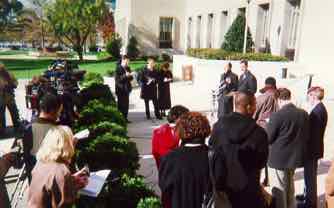
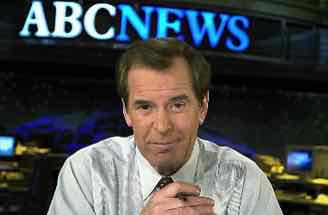
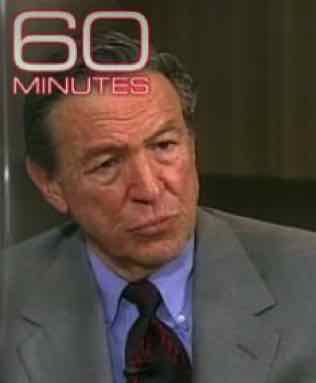
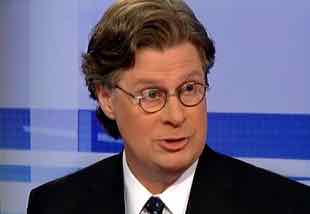

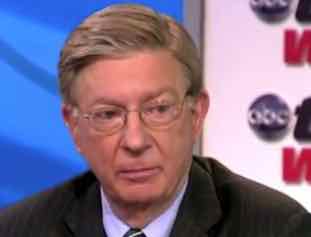

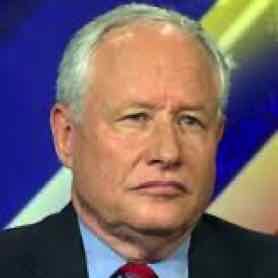
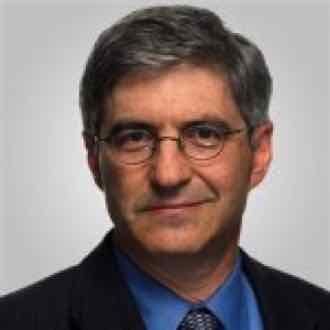
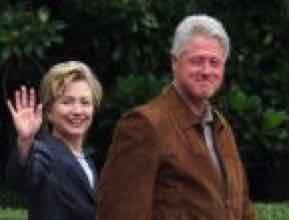
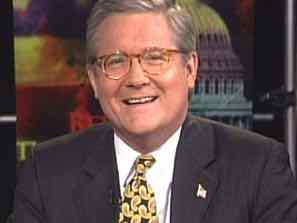
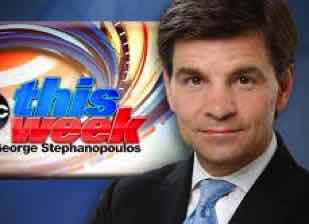

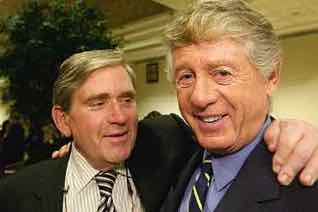
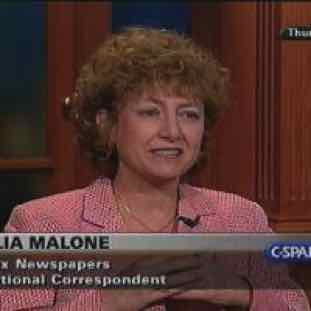
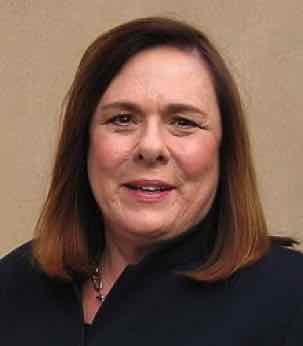
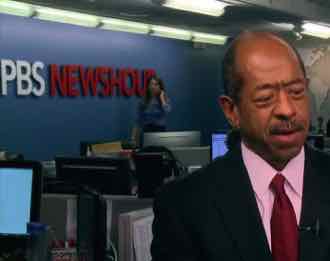

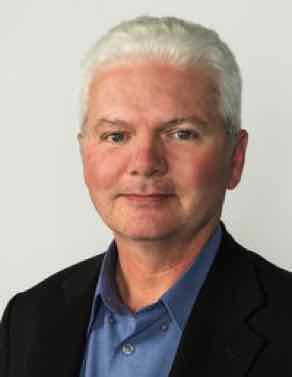
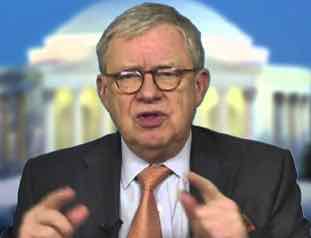
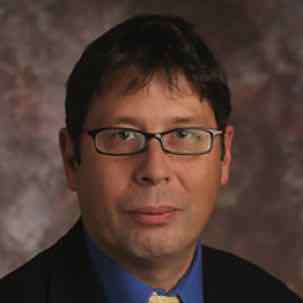
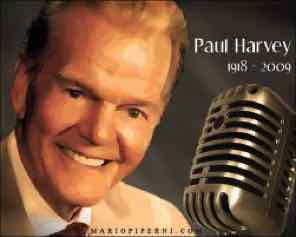
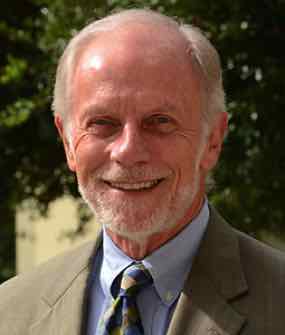
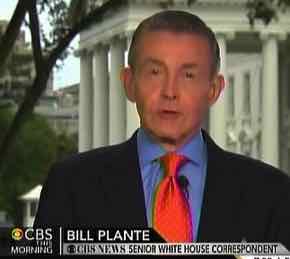
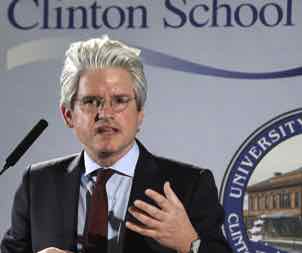
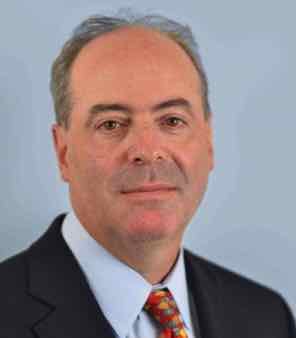
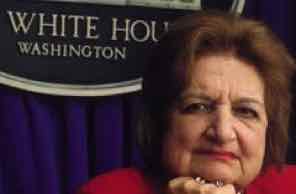
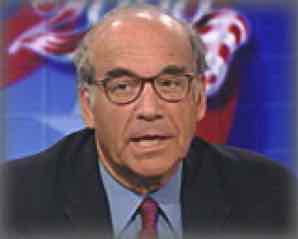




For further reading on the role of the press in the on-going cover-up of Foster's murder see
The Press and the death of Vincent Foster
Journalists and TV network news cameras gathered at the press conference Novermber 12, 1996.
Peter Jennings
Michael Isikoff
Kwame Holman
Bob Woodward
Mike Wallace
George Stephanopoulos
Bob Zelnick and Ted Koppel
Julia Malone
Peter Kenyon
Byron York
George Will
Paul Gigot
Michael Barone
Cokie Roberts
Jamie Detmer
Steve Labaton
Helen Thomas
Bill Kristol
Ann Coulter
Ann's cover-up book
Paul Harvey
Charles Bierbower
Haynes Johnson
James Stewart
Sanford Unger
David Brock
Bill Plante
Fred Barnes
Candy Crowley
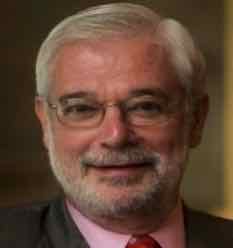
The press and Vince Foster murder cover-up
"I do not have enough evidence to go with the story about Patrick Knowlton's allegations."
"Just wait until Ken Starr's report is released, then you can apologize to me;"
"[There isn't] any credible evidence that Vincent Foster was murdered. Can I ask to change the subject?" -Bob Zelnick
"If it was reported I would cover it... I have to cover other news, it's not my job;"
"Conspiracy theorists... have already begun to complain about Starr's treatment of Patrick Knowlton."
"We're not interested in that [Foster case]"
"Foster committed suicide. Everything points to that... No, I don't want to meet [Patrick Knowlton] and you probably think I am part of the conspiracy."
"I'm not going to defend the coverage of Vincent Foster by U.S. News & World Report, I do not know enough about the Foster story."
"Thousands of reporters have looked into the death of Vincent Foster and everyone including the numerous investigations have concluded that his death was a suicide."
"There was no conspiracy, no cover-up, it was suicide;"
"If there was anything suspicious about Foster's death the Washington press would cover it;"
"Conservatives should ignore the death of Vincent Foster and stick to the real issues... It was a suicide... No, I don't want to meet Patrick Knowlton."
"No one can know why this happened."
-Bill Clinton, July 21, 1993
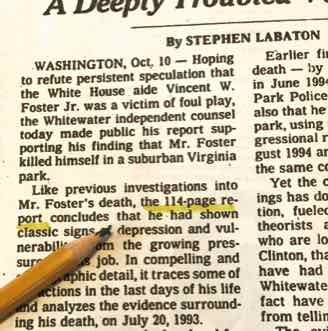
In December of 1999, we filed our 500-page report on the matter in with the US Court of Appeals panel having jurisdiction over Independent Counsels, together with 600 pages of federal records as exhibits. We asked that court to order Ken Starr to substitute that submission for the 20-page filing that the court had ordered Mr. Starr to attach to his Report on the death. The 1999 submission, later published as Failure of the Public Trust, includes a chapter on the press. It is reprinted below.
Note: Martha Malen, the Pioneer Press national news editor, was apprised of the court ordered evidence and given a copy of that evidence on October 10,1997.
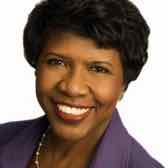
New Gwen Ifill the New York Times and the murder of Vincent Foster
